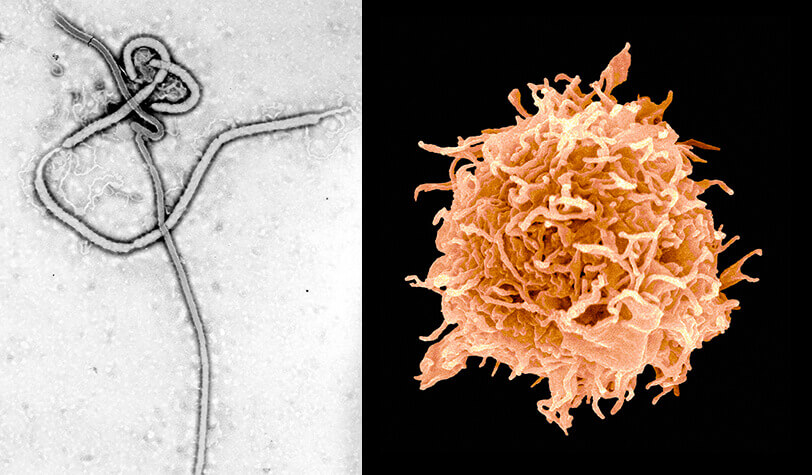Good Guy/Bad Guy: B-Cells vs. Ebola


(CDC/Dr. Frederick A. Murphy; Steve Gschmeisserner/Science Photo Library)
In the fight for immunity, our B-cells play the role of watchful attack dogs. A virus like Ebola has other ideas.
Unbeknownst to most of us most of the time, there are death matches on the microscopic level going on in our bodies most every minute of every day, instigated by everything from paper cuts to viral infections. This new series we call Good Guy/Bad Guy offers a close-up look at the battlefield that is our human bodies. As the series unfolds, we'll introduce the players one by one, good and bad, and serve up the details of a typical face-off.
Good Guy:
The B-cell (right), a specialized white blood cell, enters the pathogen-fighting fray early. When B-cells, which number about 10 billion at any given time in your body, recognize an invading virus or bacteria, they get activated by a T-cell, another specialized type of white blood cell, which triggers them to furiously clone themselves and create what are called plasma cells. These newly-minted plasma cells make essential immune response molecules called antibodies — at the rate of tens of thousands per second — that latch onto viruses and bacteria trying to invade your body.
Bad Guy:
Enter the foe — an Ebola virus particle (left). Every invading particle has proteins called antigens on its surface that mark exactly the kind of molecule it is, a kind of signature written in genes. Each B-cell has a special receptor on their surface that can read just one particular type of invading particle’s signature. If that B-cell finds a harmful particle that’s a perfect match, it attaches — then ingests it. A looped strand of Ebola virus is a particularly slippery target though. A virus particle with a particularly complicated makeup, Ebola also has a thick coating of carbohydrates covering every strand and covering up nearly all of its binding sites, effectively shielding it from the B-cell’s attempts to latch on and take the invader down.
—Johnna Rizzo





